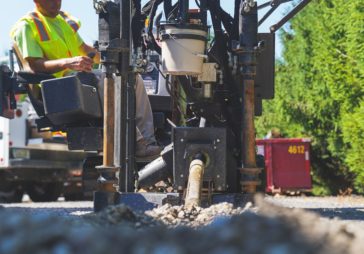In today's swiftly changing energy and construction industries, the importance of accurate drilling methods is critical. This technique of directional drilling has come forth as a transformative method that allows engineers to navigate complex underground terrains with exceptional accuracy. This novel approach not only boosts the efficiency of drilling projects but additionally lessens environmental impact and surface disruption, positioning it as a go-to option for industries ranging from oil and gas to renewable energy.
For individuals not acquainted with the process, directional drilling consists of drilling at different angles rather than exclusively vertical or horizontal directions. This flexibility allows for customized approaches in difficult sites, providing essential infrastructure without the need for extensive surface excavation. From installing pipelines beneath rivers to laying utilities in urban environments, directional drilling holds the key to modern development. In this article, we will investigate the details of directional drilling, covering its evolution, technological advancements, uses, advantages, and the future trends influencing this critical field.
Understanding Directional Drilling
Directional borehole drilling is a process enabling the boreholes at different inclinations as opposed to strictly vertical paths. This method has transformed the manner in which approach energy and utility projects are conducted, enabling access to supply which otherwise would be inaccessible. By tilting a drill bit, companies have the ability to bypass hurdles and reach several locations at a single drilling location, which enhancing productivity and lessening the disruption to surface areas.

Over the years, this drilling technique has evolved substantially. Initially, developed for the oil and gas sector, it has expanded into multiple sectors, including services, communication, and renewable energy. Improvements in tools have brought about advanced drilling equipment, instant tracking systems, and enhanced drilling fluids for optimizing performance. These innovations have made directional drilling a preferred choice in numerous construction and energy projects.
Grasping how things differ in terms of straight and horizontal drilling is essential for recognizing the benefits of this method. Upright boring often is straightforward however limited in adaptability, usually demanding several drilling sites to obtain multiple resources. In contrast, this technique is capable of creating complex boreholes which access various layers of resources causing little impact on the surface. This capability has made directional drilling integral to today's infrastructure development, especially in urban environments in scenarios where space is limited and ecological concerns are of utmost importance.
Benefits of Directional Drilling Techniques
Directional drilling offers a variety of benefits over conventional vertical drilling techniques, significantly enhancing operational efficiency. One of the key advantages is the ability to access multiple well locations from a single drilling site. This not only limits the required drilling rigs but also minimizes the overall footprint of the operation, leading to less land disruption and environmental impact. Such effectiveness is particularly advantageous in cities where space is limited and environmental regulations are stringent.
In conjunction with reducing surface disruption, directional drilling can lead to significant time and cost savings. By allowing operators to navigate around obstacles and steer clear of sensitive locations, projects can proceed more rapidly without the need for major rerouting or excavation. Moreover, the accuracy offered by directional drilling reduces the likelihood of drilling mishaps, which can incur significant project delays and costly setbacks. This effectiveness plays a crucial role in planning and executing projects, making directional drilling a preferred choice for many industries.
Finally, the environmental benefits of directional drilling are noteworthy. It can greatly reduce the disturbance to ecosystems by allowing the installation of utilities, pipelines, and construction projects to proceed with minimal impact on the surrounding environment. These benefits not only support regulatory compliance but also help maintain community relations and safeguard natural ecosystems. As environmental considerations become increasingly important in the development of infrastructure, the role of directional drilling is likely to increase in significance.
Future Trends in Directional Drilling
As the technology continues to advance, the future of directional drilling appears bright with the utilization of advanced tools and techniques. Advancements such as real-time data analytics and enhanced drilling software are enabling operators to make smarter decisions during the drilling process. These technologies provide critical insights into both subsurface conditions and drilling performance, allowing for increased precision and greater efficiency. This move towards data-driven approaches is expected to revolutionize the industry, making directional drilling more secure and more productive.
Additionally significant trend is the incorporation of AI and automation in drilling operations. web link -driven systems can optimize drill paths and enhance operational efficiency by anticipating potential issues before they arise. Automation technologies can assist in various aspects of drilling, from controlling machinery to supervision. By reducing the reliance on manual intervention, these advancements not only increase productivity but also help reduce human error and associated risks.
Lastly, the movement for sustainable infrastructure is predicted to shape the future of directional drilling. As industries move towards sustainable practices, directional drilling is becoming ever more essential for projects that aim to lessen environmental impact. The capacity to drill without extensive surface disruption makes it an ideal choice for urban areas and fragile locations. Furthermore, advancements in green drilling fluids and techniques are in line with global sustainability goals, ensuring that directional drilling continues to be a key player in the move to a greener future.
